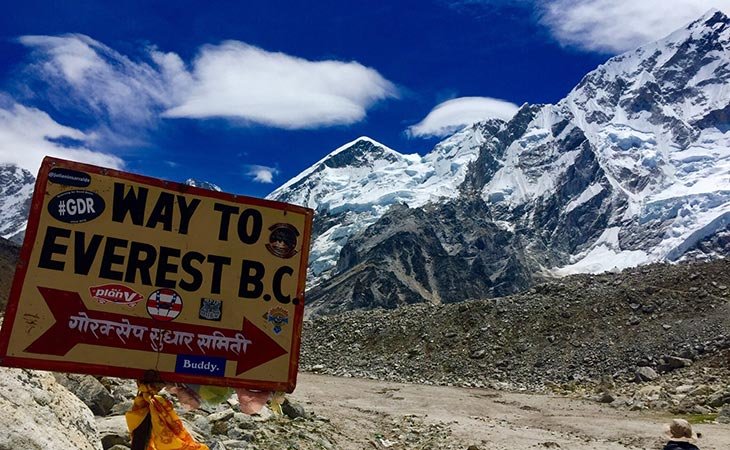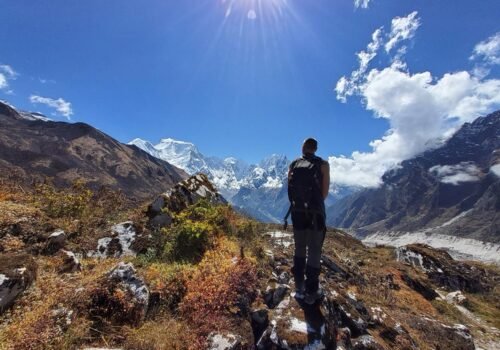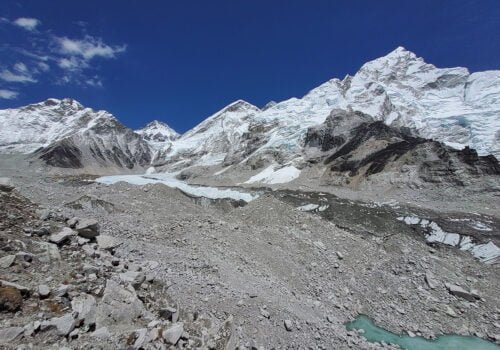Khumbu Municipality revised Everest Base Camp Restrictions
10 Mar 2024 4 min to read

Outdoor Himalayan Trek presents an article on ‘Khumbu Municipality revised Everest Base Camp Restrictions’ to provide a meaningful insight to the travelers willing to trek the Everest Base Camp this year. Everest Base Camp needs no introduction as it is the bucket-list destination of several travelers in the Everest Region. Not only that, it is also the gateway to expedite the world’s highest Mount Everest.
During the peak season, especially Spring (Mar-May) it is crowded with trekkers and mountaineers. You can find a mix of travelers who came for climbing Everest as well as only for trekking to the base camp. Due to this, the traffic in the base camp is extremely high, and proper management of the base camp’s premises is out of control. To control the activities in the base camp, Khumbu Municipality imposed major restrictions earlier.
The trekking and mountaineering season is nearer. On the verge of it, Khumbu Municipality revised Everest Base Camp restrictions intending to strike a balance between conservation efforts and expedition facilitation. Certain clauses of the newly publicized Base Camp Management Procedure 2024 have been revised which will be supervised by a 17-member committee managed by the Khumbu Pasang Lhamu Rural Municipality. An exclusive authority is given to the appointed committee to implement all or certain aspects of the regulations and smoothly simplify the process. The new revised regulations are highlighted below:

New Revised Regulations
Helicopters above Syangboche are permitted to carry expedition logistics to the base camp but with clearance from the monitoring committee.
Traditional means for the transport of goods such as local porters and animals are emphasized to support locals.
Under normal circumstances, local porters and Yaks are the topmost priority for transporting climbing gear.
At the Everest Base Camp, space for dining and sleeping quarters is allocated.
Each person is allowed 60 sq. ft. (5.5 sq. m) for dining and 80 sq. ft. (7.4 sq. m) for sleeping quarters.
Commercial endeavors such as bars, spas, bakeries, and cafes within the base camp premises are strictly restricted.
A poop bag or biodegradable bag for waste disposal for climbers staying above the base camp is compulsory.
Overnight stays at the Everest Base Camp for visitors and trekkers are restricted.
Only specific groups (family members, relatives, friends), medical personnel, base camp managers, and sponsors of expedition members are exceptions to stay at the base camp.
The expedition team comprising a maximum of 15 members can register desirable high-altitude and base camp workers.
Attached toilets inside the tents are not allowed.
Each expedition team (2 to 15 members) is only permitted to set up a maximum of 4 toilet tents, 2 shower tents, and 2 additional urinary tents.
The base camp features only 3 helipads for landing and taking off and they are mainly designed for rescue and evacuation purposes above the base camp.
An adoption of the check-in-out system at the base camp to trace the climbers’ status above the base camp.
Expedition teams must register the inventory of essential logistics required above the base camp.
Once the expedition is completed, storing the inventory of essential logistics at the high camps is strictly restricted.
Above the base camp, box tents are completely prohibited.
The use of new ropes is mandatory while fixing the climbing route.
Under the principle of ‘Leave No Trace,’ all teams climbing Everest, Lhotse, and Nuptse are required to bring back a minimum of 8kg of garbage per member and 3kg per member for Ama Dablam climbers.
Expedition agencies will be accountable for reclaiming the bodies of their respective members.
The ‘Garbage Clearance Letter’ to the expedition agencies is provided only after the proper disposal of waste and recovery of the bodies.





